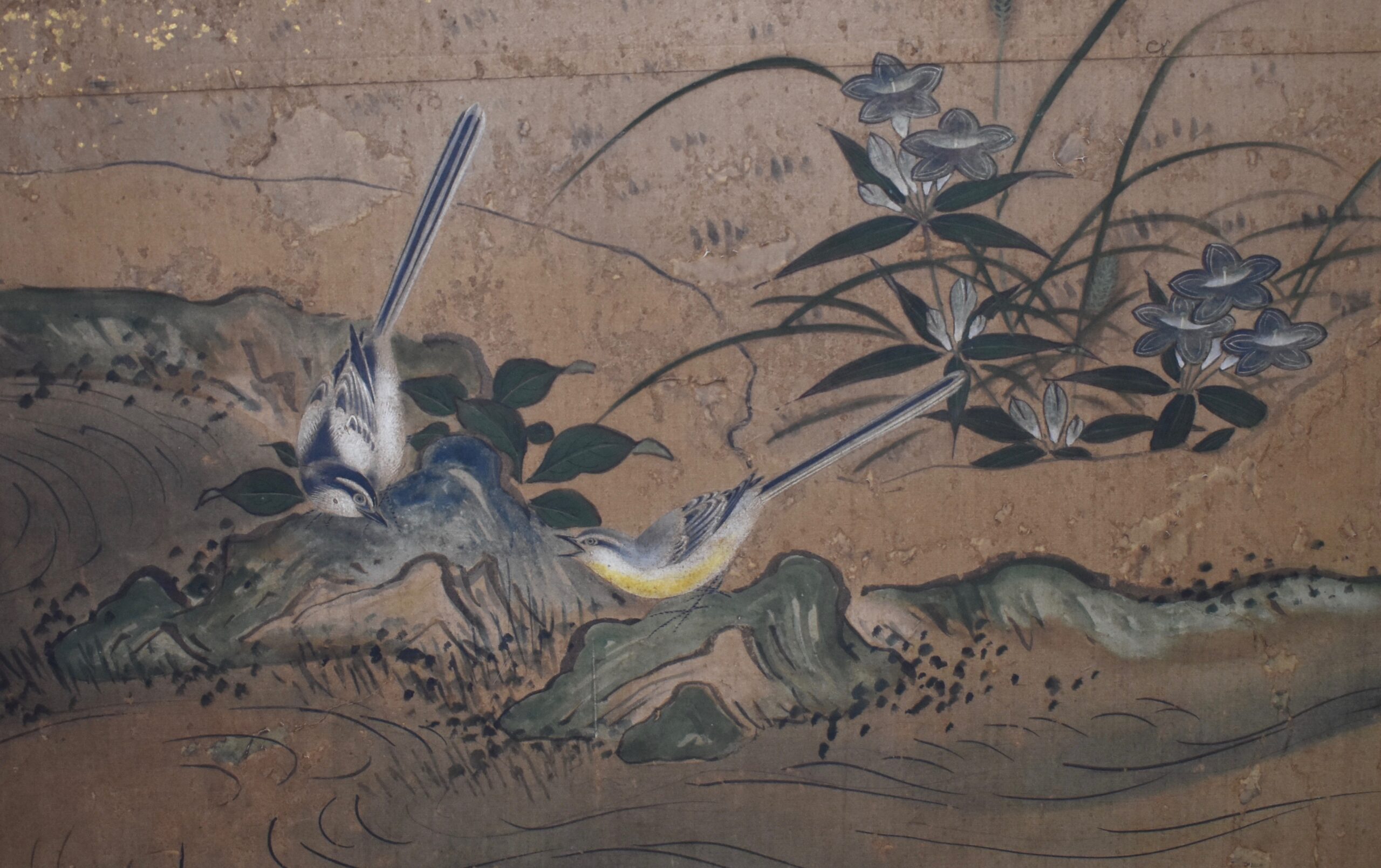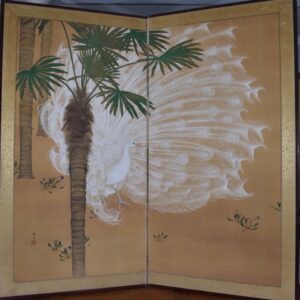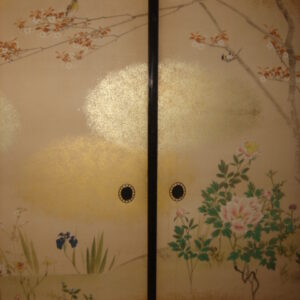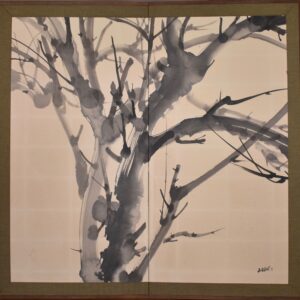Kacho-ga , the Japanese for Birds and Flowers is a popular subject in both Japan and China. Here sparrow, wagtails and wild quails are depicted in a misty gold landscape, among bamboo, chrysanthemums, morning glory, and other flowers and plants. The mixture of flora from different seasons is not unusual, and it reflects the transient passage of time. This early screen is a good example of the use of square hold leaf in the background.
In later screens, the squares grow larger and are more regular. When depicting the hazy clouds, the artist used sunago (sprinkled gold) to obtain a dreamy and misty effect. Most popular forms of byobu are two-and six-fold screen, the latter more often that not produced in pairs. They were referred to as isso, one pair, treated as an entity.This screen probably had another one to match to its right, where the composition would continue with the following seasons. Only a large castle interior would be able to accommodate paintings of this size, each usually approximately 3.5 m long. From the early 20th century onwards, two-fold screens increased in popularity as the size of living quarters in modern day Japan decreased.





